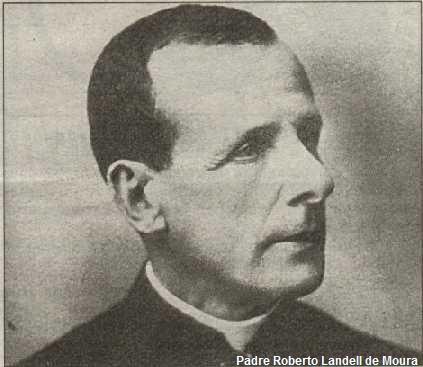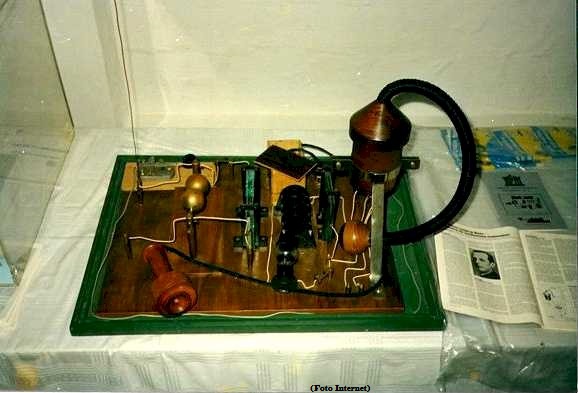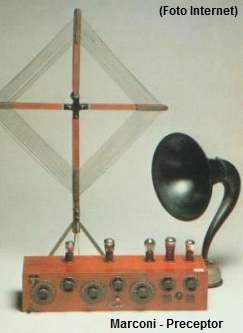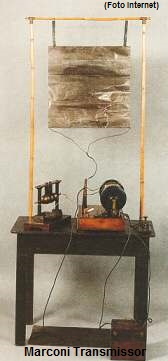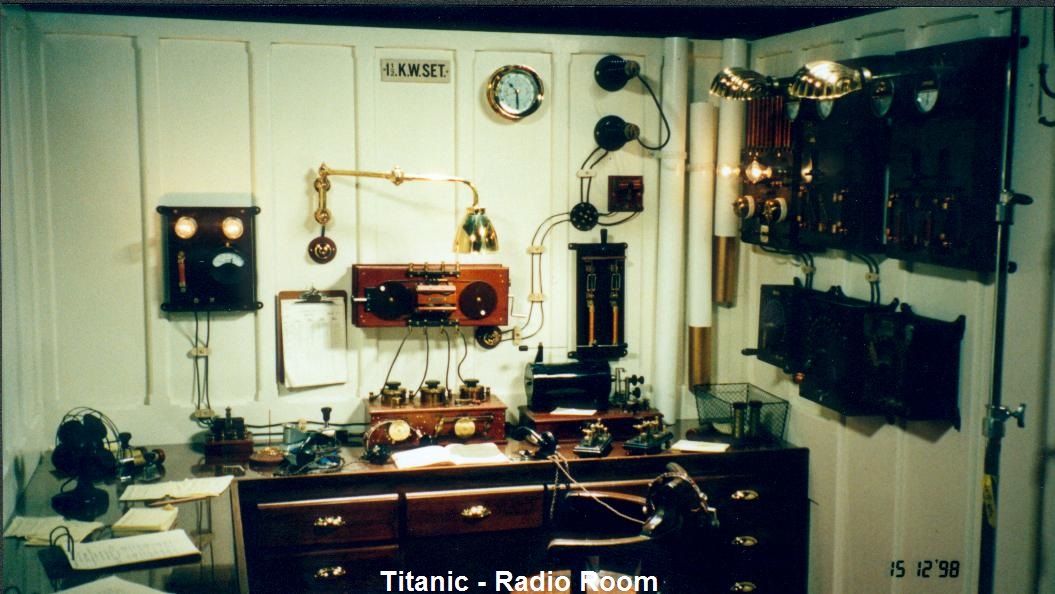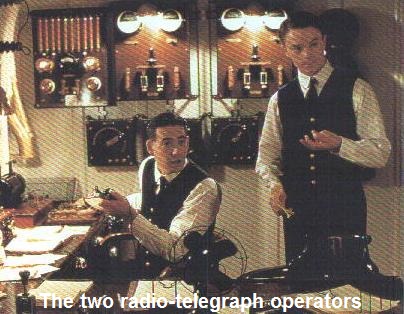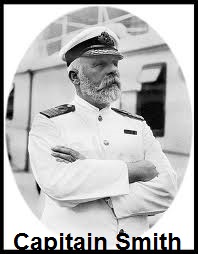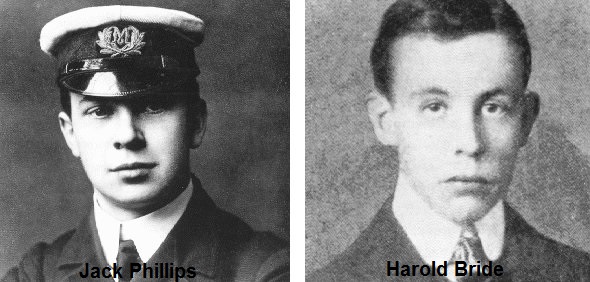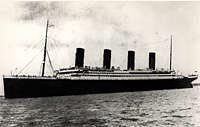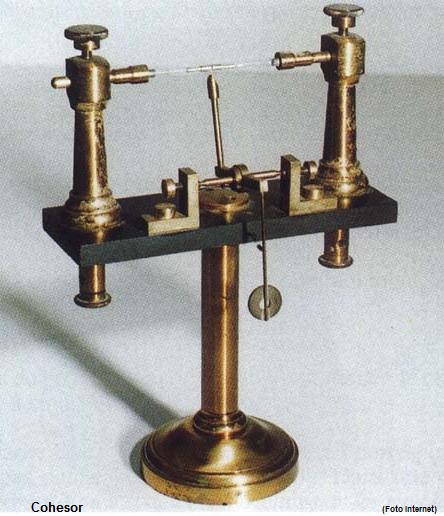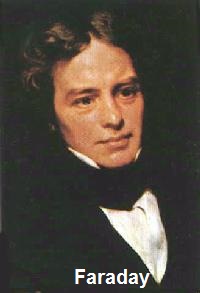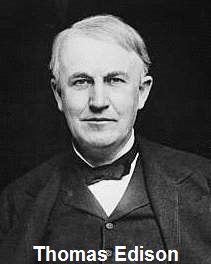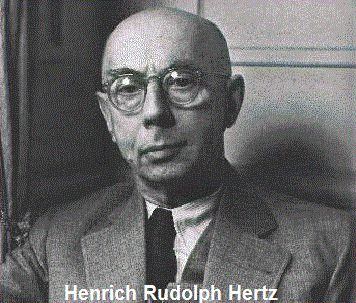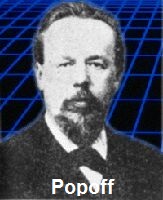Radio history
(Reproduction of this
text is authorized provided the holder is preserved and mentioned - All
Rights Reserved - Marcus Martins - PY4SM / PY2DD )
During our research on the history of radio, we located several publications that consider the Italian Guglielmo Marconi as the inventor of the radio transmitter in the year 1896. But the US Supreme Court granted the Nikola Tesla the merits of radio creation, given that Marconi had used 19 patents of Nikola Tesla in your project.
Nikola Tesla (Nicola Tesla or Никола Тесла) ethnic Serbs, was an inventor in the fields of mechanical engineering and electrical engineering, becoming later a US citizen. Tesla is often described as an important scientist and inventor of modernity, a man who "spread light on the face of the earth". It is best known for his many revolutionary contributions in the field of electromagnetism in the late nineteenth century and early twentieth century. Various patents of Tesla and his theoretical work form the basis of modern electric power systems into alternating current (AC), including the poly-phase power distribution systems and the AC motor, with which assisted in the introduction of the Second Industrial Revolution.
After his demonstration
of the transmission of wireless radio signals in 1894 and after being the
winner of the "War of Currents", he became well respected as one of the
largest electro-technical engineers working in the US. Many of his early
work pioneered modern electrical engineering and engineering many of his
discoveries were important to breaking the paths for the future. During
this period, the United States, Tesla's fame rivaled that of any other
inventor or scientist in history and popular culture, but due to his
eccentric personality and his seemingly unbelievable and bizarre claims
about possible scientific developments, Tesla eventually fell in ostracism
and was seen as a mad scientist.
Having never given much thought to their finances, Tesla died impoverished
after 86 years.
Tesla also contributed in different fields such as robotics, remote
control, and radar, and computer science in addition to the expansion of
ballistics, nuclear physics and theoretical physics. In the year 1943 the
US Supreme Court believed him as the inventor of radio.
Father Roberto Landell de Moura built several devices that exposed to the
public in São Paulo in 1893, such as:
- The Teleauxiófono (wired telephony);
- The Caleófono (wired telephony);
- The Anematófono (wireless telephony);
- The Teletiton (phonetic telegraph,
wireless, with which two people can communicate without being heard by
others);
- The Edífono (for debugging the
parasitic vibrations of the voice phone misspelled, reproducing the
natural).
Landell de Moura was a Catholic priest, scientist and inventor, considered
the patron of the Radio Amateurs of Brazil and the radio pioneer. His
parents called Inacio Ferreira de Moura and Sara Mariana Landell de Moura
and Landell was the third child among 14 siblings. He attended the Jesuit
College in São Leopoldo-RS and together with his brother William, moved to
Rio de Janeiro in 1879 and then to Rome where he entered the College Pius
American and the Gregorian University. During his studies, always devoted
body and soul to the study of physics has developed his theory about the
University of the Physical Forces and the Harmony of the Universe. He
completed his ecclesiastical training in Rome, graduating in theology, and
was ordained priest in 1886, the year he returned to Brazil. Replaced on
several occasions the chaplain of the Imperial Palace in Rio de Janeiro,
and had the opportunity to hold long discussions about science and
especially of physics with D. Pedro II. On the occasion of the
commemoration of the 150th anniversary of his birth, celebrated on January
21, 2011, Father Roberto Landell de Moura was written in the book of the
Homeland Heroes - Law No. 12,614 on April 27, 2012.
Was self-taught and
continued his studies in Brazil, performing their first experiences in the
city of São Paulo in the late nineteenth century. It was transferred to
the city of Campinas-SP in 1893 which further increased their experiences
using the short time available to it, because their religious activities
held him enough. Some of their findings all thoroughly documented and
wrote down for days and nights in his laboratory (a dark and humid little
room in the parish house funds). He worked frantically, alone, making much
of the necessary parts in the assembly of his "human voice transmitter at
a distance". To everyone's amazement his invention was a success! Despite
the success of the church it was afraid with that invention created by a
priest. They came to regard him as a madman, phony, wizard, witch
dangerous, renegade priest... But Landell de Moura was still in their
dedication to their wonderful inventions.
Pioneer in voice
transmission, using radio equipment built by himself Landell transmitted
the human voice by means of two devices - the first, a radio transmitter
which used an invented electromechanical microphone also by him and that
captured the sounds through a resonance chamber with a coil Ruhmkorff and
radiated by an antenna or two spark spheres. The reception was using
detectors that have been improved in the following years.
Landell de Moura held
from 1892 to 1893 experiences in the cities of Campinas and São Paulo. In
1899 the newspaper “O Estado de S. Paulo” reported that "it
transmitted the human voice from the College of the Sisters of St. Joseph
College Santana today, on top of the Santana district, north of the state
capital." As early as June 10, 1900 was reported by “Jornal do
Comercio”: "Last Sunday (03 June) at the top of Santana, in the city of São Paulo,
the priest Landell de Moura made a particular experience with various
devices of their invention. In order to demonstrate some laws he
discovered in studying the propagation of sound, light and electricity
through space, which were crowned with brilliant success. Attended this
event, among other, Mr. Percy Charles Parmenter Lupton
representative of the British
government and his family".
Failing to private or governmental acceptance of their inventions and
after being in the United States for three years, Landell de Moura
disillusioned returned to Brazil in 1905. Still maintaining a thread of
hope of support. He sought the then President of the Republic Rodrigues
Alves and asked him two warships to make a show of their revolutionary
inventions. After a few days received a visit from an advisor to the
President of the Republic. An important detail was asked him, "What is the
distance that should be the two boats" said Landell de Moura: "In high
seas, as far as possible" The aide when returning informed the President
Rodrigues Alves: "Excellency, the such priest is positively insane!"
Landell de Moura failed to ships.
Father Roberto Landell de Moura died of tuberculosis at age 67, the full
scientific anonymity in Porto Alegre-RS, in a bed of the Hospital of the
Portuguese Charity.
|
The early radio history
was marked by radio transmissions and receptions being used about the same
time. Some consider the first "real" radio broadcast in the world was held
in 1899 in the USA by Lee de Forest experimentally to test the triode
valve.
In the same year
Marconi succeeded when he sent a message by "wireless transmission"
through the English Channel, a distance of 32 miles. In December of 1901,
Marconi made
a "wireless" across the Atlantic Ocean, a feat that drew attention from
around the world and fueled the imagination of many people who were
interested and wanted to participate in the fascinating discovery.
In fact, at the
beginning, everything was "spark". But exactly what was the "spark"? |
|
To facilitate your understanding of what was "spark", do the following:
connect your radio on a summer evening in the bands of Medias Waves (OM),
Long Wave (LW) or Short Wave (OC), and listen to the sounds of static. Now
connect your vacuum cleaner or an electric shaver, and listen to your
radio again. Listen to noise being caused by sparking the engine... In
summary communication spark was merely a "controlled sparkle" which could
when we applied a high voltage coil and thus of sparks between the tabs.
One of the terminals of the coil was attached to an antenna and the spark
was switched ON and OFF (on and off) to transmit the code. The signal
generated occupied a huge range. The best spark transmitter operating in
1906 at 400 meters - 750kHz - generated a signal occupying a range between
250metros (1.200kHz) and 550 meters (545 kHz). The receptors were no
better. Prior to 1912, all systems were basically detectors without
amplification. Tuners were primitive or nonexistent. As might be expected,
by today's standards, the first seasons of "wireless" were extremely
inefficient. The range of transmissions ranged from six miles with a spark
coil with ½ inch, 100 miles with a station of 1 Kilowatt and a spark coil
with 15 inches. Vessels 5 KW transmitters could reach a maximum of 500
miles.
|
It was in this
world of communications (almost impossible) that the first radio
amateurs ventured. Currently, if we focus on the period prior to the
year 1908, it would actually be more appropriate to speak of
"experimenters" than in "amateur radio".
During the first
decade of wireless communications had little interest in personal
communications using the radio; the great interest was the technical
development of pure science, but also with an eye on the money that
the radio could generate as a means of communication. Experimenters
were unorganized and with the exception of those living nearby and did
their tests, there was no knowledge of other pioneer stations. If
there were some "amateur" before 190, its existence was lost in the
absence of information, in the darkness of prehistory. In the year
1908, however, the reality of wireless communications has begun to
change.
|
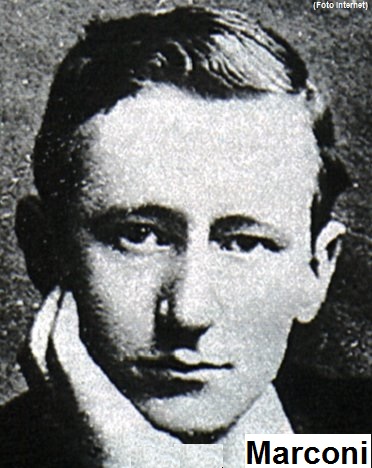 |
Important technical developments reached its first phase and the United Wireless, one of the largest manufacturers of the time; it formed the first monopoly of wireless communications. In parallel, new magazines were successful and among them we highlight the "Modern Electrics" which published 2,000 copies and rose to more than 30,000 copies in just two years. Also in 1908 he published the first "handbook" for experimenters (hams). It was very difficult (even impossible) to know exactly how many stations were working without any regulation at that time... but estimates indicate that the "major" stations (i.e. those able to communicate beyond 10 miles) was about 600, while the "smaller" which could achieve 1 6 miles were probably a 3,000.
For these reasons it is that we believe and say that the beginning of the Amateur happened in the year 1908. There is no doubt that Father Landell de Moura was the first amateur. The hard part will be to determine the second amateur. Without licensing, regulations or records, hardly find a decisive answer to this question. However we can mention the name of W.E.D. Stokes Jr. who was a founder and Chairman number-1 First Amateur Radio Club - the Junior Wireless Club in New York City - USA 2 January 1909. Other founding members who can claim the title of second amateur are George Eltz, Frank King, and Fred Seymour. In the same year, the Wireless Association of America and the Radio Club of Salt Lake City were created. During 1910 the wireless clubs spread by the USA, and the first "call book" was published. Given that in this period there was no regulation, call signs listed in the "call book" were chosen by the operator... this brings us to another interesting question; how did the word or symbol "ham"? At this time, there was a phenomenal season with a 5KW transmitter that could be heard during the day and night at distances over 500 miles. The operator of this station used the initials of his name - HAM.
The Amateur radio continued to grow. In the year 1911, the "Modern Electrics" had a circulation of 52,000 copies and amateurs already totaled 10,000 in the country. With thousands of broadcasting stations, radio amateurs and commercial interference have become a serious problem especially for maritime communications.
The ships, due to the limited length of their antennae, were limited to frequencies between 450 and 600 meters (660-500 kHz). As we have seen, one spark station could take this entire "spectrum". Thus, it was imperative that all stations cooperate and stay in "stand by" while the others were transmitting. Unfortunately many times this was not the case. It is noteworthy that there was interference between amateur stations and commercial stations and often among the very commercial stations of different companies. A total madness! Encouraged and stimulated by the Navy (which was using old and inefficient equipment and that reason they suffer from excessive interference), Congress began preparing a regulation for wireless communications. That's when a big accident happened that quickly and dramatically changed the "spectrum of wireless communications".
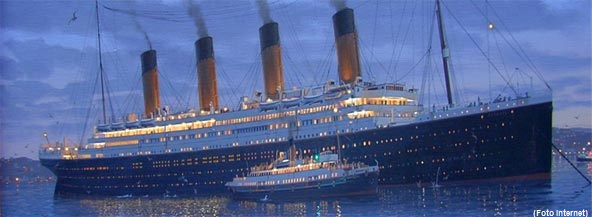 |
On 15 April 1912, the R.M.S. Titanic hit an "iceberg" in the North
Atlantic and sank. Thanks to radio communications and the first SOS in
history, 713 lives were saved. However it was argued that the number of
survivors could have been higher if a regulation in wireless
communications already been adopted. It was a Monday, 15 / April / 1912,
at 12:30. "The Time Machine" (the radio) is within the Titanic in the
North Atlantic at 41 degrees 46'Norte, and 50 degrees 14 ' West. |
|
The majestic ship the
largest and most luxurious in the world in his inaugural trip. The
TITANIC, equipped with a Marconi 5KW station, and two tired operators
earning $ 20 a month, not as Ship Company employees, but as employees of
the Marconi Company. The box was full of messages received messages,
several telegrams from the stock market personnel. They were so busy
communicating with Cape Race, Newfoundland, which did not even notice a
slight clang.
When the
two operators of the radio station, Jack Phillips and Harold Bride, passed
routine traffic, the Captain came and told them, "Gentlemen, the ship
collided with an "iceberg" - send messages of danger and distress
quickly". The "Blue Spark" jumped across the void while Jack sent "CQD"
(come quickly, danger!). |
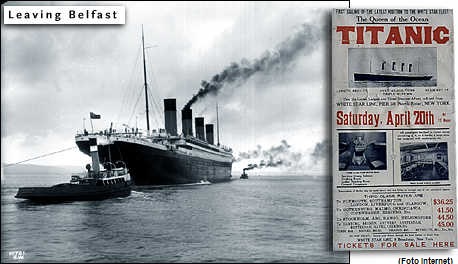 |
|
"Send SOS" Harold
said, "This is the new message and may be our last chance to send it".
Thus began the historical moment that changed the radio. Two hours
later, Jack Phillips and over 1,500 passengers were dead, "Titanic"
landed in the ocean and 713 survivors huddled in background lifeguard
waiting for help at sea. Tragic mistakes in the history the "Titanic"
showed the urgent need for regulations to radio communications. The
first ship to respond to the distress call was the German Liner, the
"Frankfurt". |
While
the communications operator "Frankfurt" reported to his captain, the ship
"Carpathia " and " Cape Race" kept in touch . When the operator of the
"Frankfurt " came back asking for more information, Phillip replied "SHUT UP ,
SHUT UP , STAND BY and STAY OUT " . This seems bizarre by our standards, but
it made perfect sense for operators of the time (year 1912). The ship
"Titanic" , "Carpathia" and "Cape Race" were equipped with stations and
telegraph Marconi , while the "Frankfurt" used the services of Telefunken it
was German and major competitor Marconi in that country. This trade war
extended to the operators themselves. NEVER routine traffic would a Marconi
station to a rival, even in an emergency!
The
wireless controversy would continue even after the "Carpathia" picked up the
survivors. A communication was received, allegedly from the "Carpathia", which
read: "... CALM SEA" "ALL SHIP PASSENGERS" TITANIC "SAFELY TRANSFERRED TO"
SSPARISIAN TITANIC "BEING TOWED BY SHIP" VIRGINIAN ALLEN LINER TO THE PORT.
"Other messages appeared, also stating that ALL passengers were safe and the
ship was being towed there was only one problem - these messages were not
coming from "Carpathia". The reason was simple their communications had one
maximum range of only 150 miles. On the other hand, the communications
operator "Carpathia" has some transmissions to only "Olympic" (sister ship the
"Titanic"), in which he wired list of survivors and some messages Bruce Ismay
- President of White Star Lines, then shut down his station. So complete was
the radio silence "Carpathia" they refused to respond to calls from Navy ships
sent to the scene by US President Mr. William Howard Taft. The White Star
Line, owner of "Titanic", was still insisting that all passengers were safe
and the ship had not sunk. But as she made these false statements, the
company's dome knew all the gruesome details that had already been informed by
the "Olympic". But the rest of the world also knew the entire history thanks
to a 21 year old operator named David Sarnoff, who was able to detect a very
weak signal "Olimpic". Faced with the truth, hunted by thousands of reporters
and affronted relatives of passengers, the White Star Liner officials finally
succumbed and revealed all. However, the "Carpathia" headed toward New York
City. When the ship passed within range of shore stations, there were frantic
attempts to communicate by radio amateurs and authorities, but silence on the
radio the “Carpathia” was total and absolute.
|
At the Port of New York, the "Carpathia" was met by Senator William A.
Smith of Michigan, a sensible Populist and Chairman of the commission
investigating the shipwreck. He immediately ordered everyone involved,
including Harold Bride and Harold Cottam, wireless operator of the
"Carpathia". Marconi himself who was in the United States (he was planning
to return to England in "Titanic"), was also summoned to appear. The
statement revealed the above information and even worse was the fact that
the "Californian" was just 10 miles from the "Titanic". Not only did the
"Californian" not maintained a 24-hour radio service operator, as the
ship's captain ignored the eight distress rockets sent by "Titanic". |
Senator found the cause communications silence of the "Carpathia" - was
Marconi himself. He sent messages via radio to Bride and Cottam stating
"MARCONI COMPANY TAKES GOOD SI ACCOUNT - KEEP YOUR MOUTH CALADA - HOLD YOUR
STORY - YOU WILL RECEIVE A LARGE AMOUNT OF MONEY - NOW END". This confirmed
that Marconi had an agreement with the New York Times for an exclusive story.
Thus, essential information for desperate relatives and official inquiries
from the President were a setback for the interests of Marconi. When Marconi
got on the stand, Senator Smith clung to him with surprising vehemence.
Marconi, who had been lionized by the nation, was now handled by the Senator
as an entrepreneur any that put profit above the public interest. Senator
Smith was warned that his attack on a man as popular as Marconi was political
suicide, but he did not care. In its obsession to believe that the delay in
regulating the "spectrum" of communications was to benefit the Marconi
Company, he described him as a man willing to submit a public good to his
equipment monopoly goals and "spectrum". Senator Smith used the statements on
the "Titanic to condemn the use and abuse of the current state of
communications and called for international radio regulations.
On 18 May
1912, Senator Smith introduced a bill in the Senate. Among his proposals:
Ships carrying 50 or more
passengers should have radio communications with a minimum range of 100 miles;
Radio communications
equipment must have an auxiliary power to operate until the wireless room
itself was under water or destroyed;
The
law of the Radio of 1,912 was completely obsolete since the year 1920.
Designed in an era of long wave and medium wave to spark telegraphy, the Law
was totally inadequate when it came to broadcasting and shortwave. The
Commerce Department tried to extend the law to the new requirements.
Regulations 1922-1924 which banned the amateur radio stream music and sent
them to the bands of 160, 80, 40, 20, and 5 meters, really nothing more than a
"gentlemen's agreement", valid until they are not bothered. For a long time it
worked, amateurs enthusiastically occupied their new bands and began to
communicate with the world, while the number of stations that broadcast music
in the new region 550-1500 jumped from 30 to nearly 600 in just 3 years.
Technical advances did not accompany this growth and the problems reappeared.
The transmitters controlled crystal were still far from being built and the
instability of broadcastings, which diverted their frequencies, caused
interference in other adjacent stations .Even outside the stations 400 to 600
cycles could cause interference of (signs by the mixing of two frequencies).
Most receptors were manufactured in 1920 or regenerative or TRF (Tuned Radio
Frequency), for good sensitivity and poor selectivity. As a result, in 1920
the average wave was saturated with only 600 stations. Compare that nowadays
medium wave with hard frequency control 20 Hz, directional antennas and
heterodyne receivers high selectivity, allows more than 4000 stations occupy
the band of AM without interference. The Department of Commerce, therefore,
issued regulations sharing schedules (where two or more stations occupy the
same frequency at different times of day) and only operations during the day.
Stations were constantly moving to another frequency, or were requested to
lower power transmission to reduce interference. The Commerce Department also
enjoined the stations whose frequency transmitter "slid" into adjacent
channels and applies penalties. An interesting example of this was the Los
Angeles station "Sister" Aimee Semple McPherson of an evangelist church that
was leading the International Church of the Foursquare Gospel: It was obvious
the frequency slip your transmitter up and down the AM band. When federal
inspectors Radio tried to keep it in frequency, station owners wrote to the
Secretary Hoover, requiring "Followers of the Devil" stay away from your
transmitter . The Almighty is that chose their wavelength, they wrote, not the
Department of Commerce.
Many
stations had been moved or informed to reduce transmitter power, or share
their frequencies did what any American patriot could do - "hired a lawyer."
Once the legal struggles began, much has come to light. Article I, Section 8,
of the Constitution allows the federal government regulates trade BETWEEN
STATES. Moreover, it was an accepted fact that a federal agency could not make
regulations, unless you were given these powers by Congress. Thus, the lawyers
for the stations complained and challenged the Secretary of the regulations
attacked on two fronts, first, that the Radio Act of 1912 did not give
authority to the Department to regulate broadcasting stations, and second,
since many stations could not be heard through the state's borders, there was
no trade "between states," so there was no federal jurisdiction. (This was the
argument used by "Radio Free Berkley" and other low-power stations pirates).
The Court of Adjustment Day came in 1926 when an Illinois District Court
declared that there was no federal law that would allow the Secretary of
Commerce to issue licenses for music stations or designate frequencies. The
Attorney General admitted that the Federal Government had no control over the
radio, except it was authorized by the Radio Act of 1912. It was a real
pandemonium! The stations, released from Federal control increased their
powers, changed frequencies, and / or started to transmit all day. Small
stations have been put down. Unlicensed stations appeared from all sides,
chose any frequency and transmitted music. Anarchy was total.
Radio
amateurs could legally have joined this true RF orgy, nothing preventing him
from returning to stream music, moving to other frequencies, exceed the limit
of 1 kW or whatever they wished to do. To their credit they did nothing. One
reason for this was the great respect they had for the Secretary Hoover, a man
who several times publicly defended the amateurs of all possible ways. They
could have renounced the "gentlemen's agreement" they did to him. The other
reason was common sense... They knew that Congress would correct the problems
briefly adopting a new appropriate legislation. The "broadcasters" were "big
boys" with enough money, with great company and 6 million listeners; they
could disobey the spirit of the law, without any problem. Radio amateurs could
not afford that luxury. They concluded that any violation of the agreements of
1922 and 1924, even though legally they could be breached, could cost the lack
of political support. So while the segment 550 to 1500 Khz was free to all,
bands of hams were orderly disciplined with hams, masters in the art of
crystal control and operational skills, operating quietly.
Incidentally, one of the areas where these are needed these skills were
expeditions. Arctic to the Antarctic, MacMillan Byrd, amateurs provided
communications with the necessary knowledge and skills. Also, in emergency
areas, amateurs provided communications during blizzards and ice, hurricanes,
earthquakes and floods. The federal government quickly ended with the chaotic
situation in the broadcast band. The Radio Act of 1927 was passed on 23
February. This law defined the "amateur" for the first time in a Federal
statute, and created the Federal Radio Commission, which was given the power
to classify and regulate all aspects of all radio stations targeting the
"public interest, convenience or necessity". Criminal penalties were provided
for in the Act of 1927 and entered into force immediately.
The
Commission immediately started working and "The followers of the devil" put to
Sister Aimee station frequency, sealed the KFKB transmitter, the station of
"Dr. John Brinkley," graduate Eclectic Medical School and proponent of the
prostate operations and (believe if you like) transplanting goat glands to
cure all diseases. Patients by the thousands heard his broadcast KFKB, and
crowds came to Kansas to be operated. After the Commission closed its season,
"Dr. Brinkley" went to Mexico near the border with Texas, moved into its new
150,000 watt station, and continued their fraudulent operations. In gratitude
to the hams, the Commission maintained the same situation for the 15,000 hams
(amateur) existing at the time. All agreements and regulations enacted by the
Commerce Department were maintained and incorporated in current regulations. A
single change was implemented: adding the letter W to the prefix of their
amateur radio stations, as well 1AW turned W1AW, 1JS turned W1JS, etc.
However, the existence of sympathetic Commission and friendly regulations were
not enough. The radio was truly international, and as a result, a
Radiotelegraph international conference was scheduled in Washington, DC, for
the 4th of October 1927. The word was to the accession of the governments of
Europe and the Middle East who were against amateurs. To conclude, it is good
all know that the history of Radio is intertwined with the story of several
characters that greatly contributed to that today we can connect our TV at
home and watch a program being broadcast live by example of Japan. Since
William Gilbert that in the year 1600 invented the electroscope by studying
magnetism to Lee De Forest to which is assigned the first opera broadcast on
the radio, dozens of people over hundreds of years, participated in this
discovery that revolutionized the twentieth century, approaching,
entertaining, informing and saving millions of people around the world.
We
cannot fail to mention Michael Faraday, the great English scholar who
discovered in 1831 the magnetic induction as well as the great contribution
made by James C. Maxwell mathematically discovered the existence of
electromagnetic waves, different only in size of the light waves, but with the
same speed (300,000) three hundred thousand kilometers per second. Another
character that marked the history of communications was Thomas A. Edison in
1880 found that when putting in a crystal hourglass a filament and a separate
metal plate to each other and, by connecting the filament to a negative
battery and the positive plate, the passage noted-a plate of electrical
current to the filament and never in the opposite direction. Great
contribution was given by German professor Heinrich Rudolph Hertz who proved
in practice in 1890 the existence of electromagnetic waves, called today
"radio waves". His experiences were based on Maxwell's theory. Hertz
discovered that when a spark to jump in its oscillator device also sparks
leaping between the ends of a metal arc placed at a distance called resonator.
Hertz this experiment demonstrated that the electromagnetic waves have the
same speed as light waves. In his honor, the radio waves are now called
"Hertzian waves", is also using it "HERTZ" as frequency drive. Many characters
from the history of radio contributed to the improvement of transmission and
reception of electromagnetic signals. Thus we have Professor Pupim 1.887
discovered that in the "Electrical Tuning" used in almost all the radio
apparatuses. Branly, who in 1892, discovered his famous "COHESOR"; Popoff who
devised a way to add an electric vibrator to Branly cohesor improving its
operation. Here comes in 1896 Guglielmo Marconi using an oscillator type
"Hertz" and cohesor of "BRANLY-Popoff," performing the transmission and
reception signals over a short distance. Marconi put into practice the
theories, ideas and Tesla's discoveries, Faraday, Maxwell, Edison, Hertz,
Branly and Popoff.
It
was the end of the 19th century and great discoveries were being made in short
time worldwide in the field of communications, involving the prospect of
earning big money as well as the interest of certain countries keep secret,
for use military, the inventions of its scientists and researchers. Thus it is
very difficult to say with certainty who invented the radio. There is a global
trend that gives this credit to Guglielmo Marconi, but we cannot forget the
Russian physicist Alexander Stepanovich Popov (1859-1906) that on May 7, 1895,
transmitted, received and deciphered the first telegraphic message
unsuccessfully Wire. The Russian scientist Alexander Popov had sent a message
from a Russian Navy ship 30 miles away at sea, to his laboratory in St.
Petersburg - Russia. It was an amazing feat, but the world took no notice. The
intention of the Russian Navy was monopolize this powerful technology, urging
Popov not to give any news of their findings. Regarded as a great state
secret, Popov loses any chance of world fame.
You
commit an injustice to a Brazilian scientist Father Roberto Landell de Moura,
predecessor of Marconi and everyone else. His theses, signed before 1890,
predicted the "wireless telegraphy", the "radio-telephony", the
"broadcasting", the "communications satellite" and "laser". In the year 1900,
while the achievement of Marconi did not exceed the distance of 24 km, Father
Landell de Moura got the Brazilian government charter No. 3279, recognizing
its universal pioneering scientific merits in the field of telecommunications.
In 1901, Father Landell de Moura, set sail for the United States and 1,904
purposes, The Patent Office at Washington awarded him three charters: for the
wireless telegraph, to the cordless phone and the wave transmitter sound. You
could consider the Padre Landell de Moura the forerunner in the transmissions
of other voices and noises. Its patents claim it. In the twentieth century, it
turns the big jump in the findings and modernization, while in 1904 John
Ambrose Fleming, the great British scientist invents elementary valve, known
as the "Fleming Valve" which consisted of plate and filament. Based on
Fleming's findings, Dr. Lee De Forest built in 1905 to Audion valve that
completely transformed the radio industry. This valve was composed of
filament, plate and grid, replacing sparks transmitters of Marconi by this new
technology. Thus, not only was transmitted signals as well as voice and music
by Hertzian waves. It fell to De Forest the honor of having been the first to
broadcast the radio opera music directly from their station in California. He
was the first to transmit the radio comedy shows. With the end of World War I,
the American Westinghouse industry was left with a large stock of radios
manufactured for the troops in the war. Broadcasting was born by chance, when
a large antenna was installed in the factory yard to stream music, and through
this "Marketing", selling the devices "stranded" for the inhabitants of the
neighborhood. Thus Westinghouse Electric Co. is proud to have sponsored the
first commercial broadcaster in the world, the well-known "KDKA" Pittsburgh.
She began to work regularly in 1920 and since then, day after day came the
growing number of radio stations around the world.
(Reproduction of this
text is authorized provided the holder is preserved and mentioned -
Copyright : Marcus Martins - PY4SM / PY2DD)
.gif)
